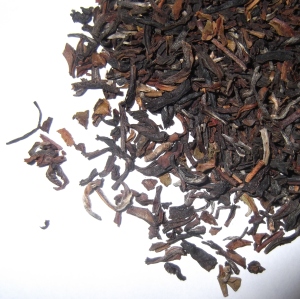Sencha Sakura
Welcome to readers from Finland and Liberia
Fortune Cookie
誰が、私は私の茶室でお茶を飲みながら午前とき、私は私が私の唇にボウルを持ち上げるのこの瞬間が永遠自体が時間と空間を超えていることで、その宇宙全体を飲み込むいことを否定するでしょうか?
Who would then deny that when I am sipping tea in my tearoom I am
swallowing the whole universe with it and that this very moment of my lifting
the bowl to my lips is eternity itself transcending time and space? ~ D.T. Suzuki
Sencha Sakura
Sakura is the ubiquitous flowering cherry tree planted in
Japanese parks, along streets and within commons and yards. During late March
through May, Sakura blooms across Japan. The Hanami festival celebrates the
coming of the spring season and is the time to take a stroll and view the
blooming cherry trees. The cherry blossom symbolises feminine beauty, the
feminine principle and love in the language of herbs. Cherry blossoms, with
their short blooming times, are believed to represent the transient nature of
life.
Sencha is a high quality green tea grown in Japan. It is steamed briefly and rolled, shaped and dried into the distinctive thin cylinder shapes. Since it is not roasted like Chinese green teas this tea has a more vegetal, almost grass-like taste and aroma.
There is a pure form of cherry tea that involves only
cherry blossom and no green tea leaves. In this tea, Sakuraya, the petals are
actually pickled in plum vinegar and salt and the product subsequently
dried.
Green tea was first brought to Japan by Myoan Eisai, a Buddhist priest
who developed the
Rinzai Zen school from the Chinese form of Buddhism.
Japan grows other kinds of tea and produces roasted tea but the country
is best known for its green tea. The best Japanese green is said to be that
from the Yame region of Fukuoka and the Uji region of Kyoto. The so-called Uji
area has been producing Ujicha (Uji tea) for four hundred years and predates
the prefectural system. Uji is now a combination of the border regions of
Shiga, Nara, Kyoto and Mie prefectures. Soraku district in Kyoto is one of the
many tea-producing districts. Shizuoka prefecture is the most productive
producing fully 40% of Japan’s raw tea leaves.
Sencha
sakura is quite a beautiful tea. To the eye and on the palate. The flavour is
naturally sweet and extremely calming and quite deeply
pleasurable. Purists baulk at the notion of tea with any flavouring but
I do not have any problem drinking this tea. The aroma is wonderful
and soothing. The strength is there and the quality of
flavour of the leaves still strident beneath the subtle sweetness and
delicate fragrance.
Sencha has a distinctive cylindrical or needle like appearance which is a result of the drying and rolling process used in the production of sencha tea.
A tea field in the Kyoto region
For an in-depth view of Japanese green tea and its cultivars visit Ricardo Caicedo's site below:
If you like travel see Singing Birds sister site GuerillaZ below.
Today I use a glass teapot modelled on the Chinese style.
Now I can see the tea colour at all times including the short period of initial
steeping. The tea requires only 1 - 2 minutes to steep. Ensure the water is
around 80 degrees fahrenheit. The leaves can be used for another wash but
with less water and a less distinct flavour.
An historic image of the tea ceremony in Japan.
I think 2014 will be the year of the tea ceremony for me; I
plan to partake in Vietnam, China, in Japan and with some persistence
Seoul, South Korea and Pyongyang, North Korea.
Happy tea drinking!
Cheerio.









































